

Rarotonga
administrative center of the Cook islands

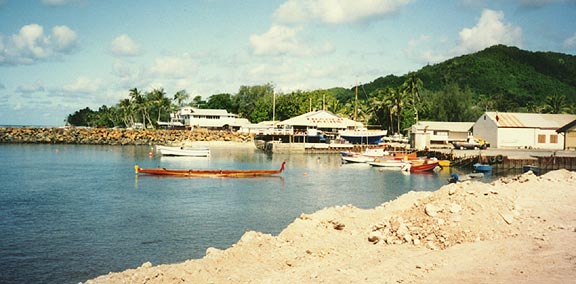
shore line
The population of the Cook Islands was 20,407 in
2000, with a population density of 86 persons per sq km (223 per sq mi). Almost
90 percent of the people live in the southern islands. The island of Rarotonga
has well over half of the population. Due to limited employment opportunities on
the islands, Cook Islanders living overseas outnumber those at home. The vast
majority live in New Zealand, and there is considerable movement of people
between the Cook Islands and New Zealand.
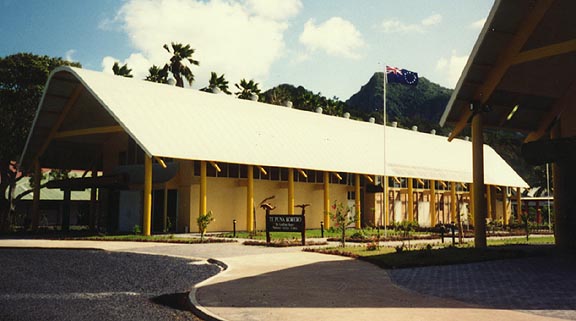
administrative building
The people of the Cook Islands are of Polynesian descent. Due to extensive
intermarriage with Europeans over many years, most of the people today are of
mixed ancestry. The official language is English, although most people are
bilingual and literate in both English and the indigenous language of Cook
Islands Maori.
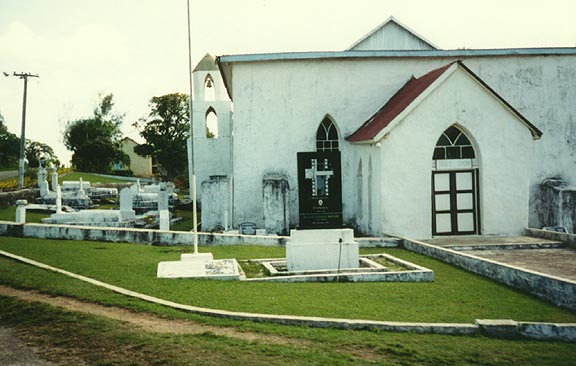
church
About 70 percent of the people belong to the Cook Islands Christian Church,
which is derived from the Congregationalist London Missionary Society. The
remaining 30 percent are about evenly divided between Catholicism and several
other faiths. Most Cook Islanders are devout churchgoers.
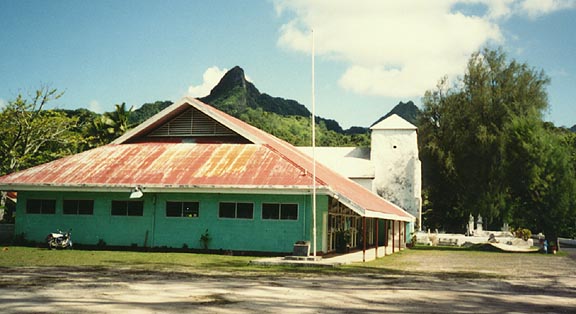
church with mountain in background
Cook Islanders are among the best educated of all Pacific Islanders. Education is compulsory between the ages of 6 and 15. The University of the South Pacific has an extension center in Rarotonga, and numerous students attend schools and universities overseas.
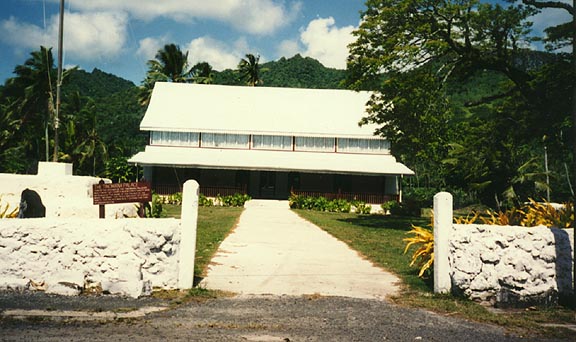
Most inhabitants of the smaller islands live in extended families and derive much of their livelihood from subsistence activities. In contrast, life on Rarotonga is heavily influenced by Western culture. Housing and dress are largely Western, and there is a variety of stores, shops, restaurants, and other small businesses.
Text from Microsoft Encarta
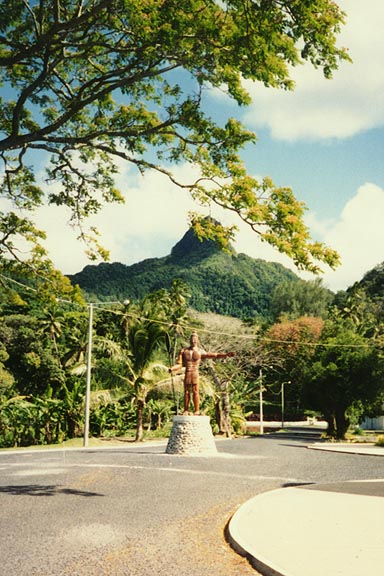
statue of native ruler
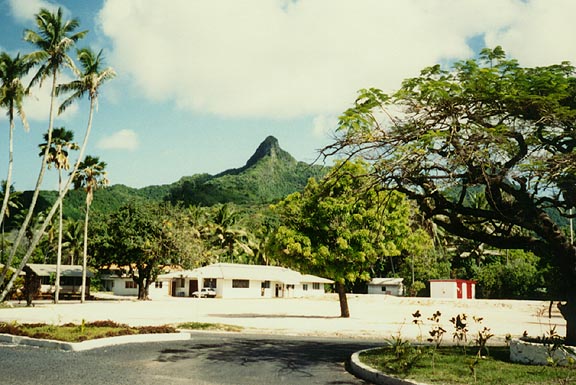
a residence
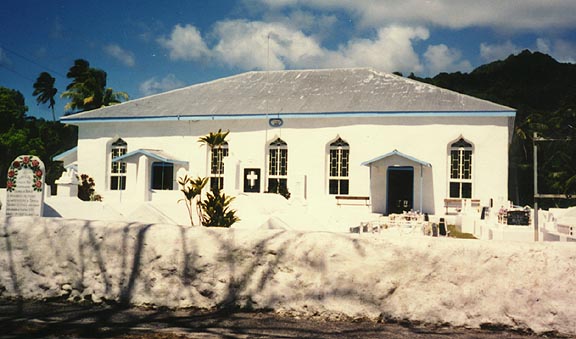
church
![]()


![]()